Dashboard on scaling up green finance
The dashboard on scaling up green finance is based on a set of ideal indicators that makes it possible to track and understand the greening of national financial systems. It is a first attempt to catalogue desirable series that allow the evolution, change and trend of a phenomenon (rather than its absolute level) to be analysed
Furthermore, while the dashboard is presented at an aggregate level, it is intended for use at the jurisdictional level. To this end, the dashboard includes graphs for aggregate regions on the left and basic metadata on the right that describe the country coverage and provide sources where these data and further breakdowns can be found, i.e. links to mostly interactive websites.
Possible sources of data were identified, at least partially, for 21 indicators.
The dashboard including metadata with the charts as separate graphics files and a structured Excel file with the source data for the charts is self-containing.
The previous version of this Dashboard, published in March 2021, is available here.
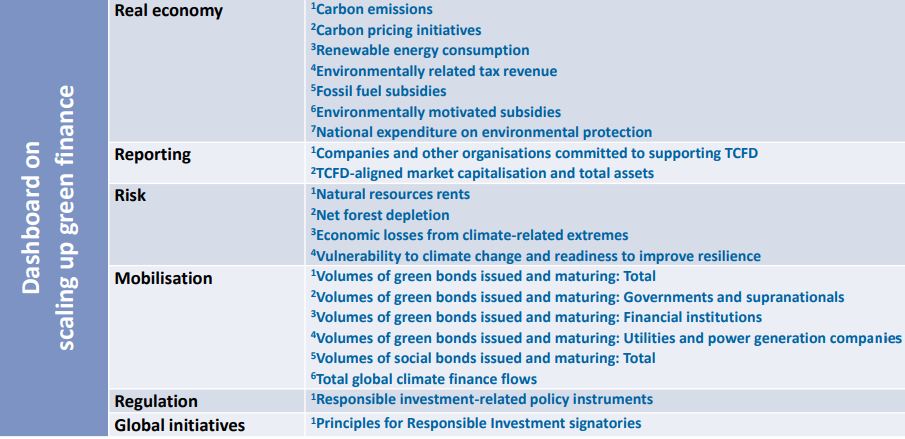
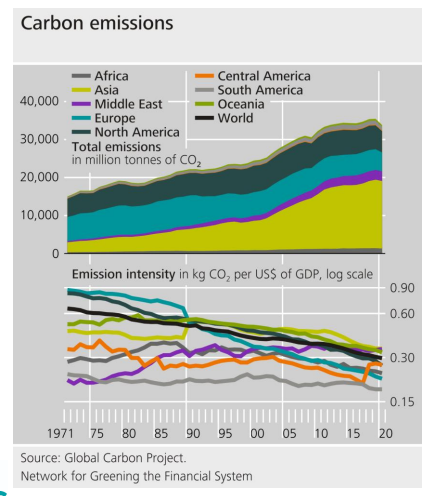
Link: Global Carbon Atlas
Code: (Territorial)
Countries: 221
Periods: 1971 – 2020 (annual)
Comments: Carbon dioxide emissions attributed to the country in which they physically occur. Data for 2019 and 2020 preliminary.

Link: Carbon Pricing Dashboard
Code: (Implemented)
Countries: 46 (36 sub-national)
Periods: 1990 – 2022 (annual)
Comments: Prices not necessarily comparable across carbon pricing initiatives.
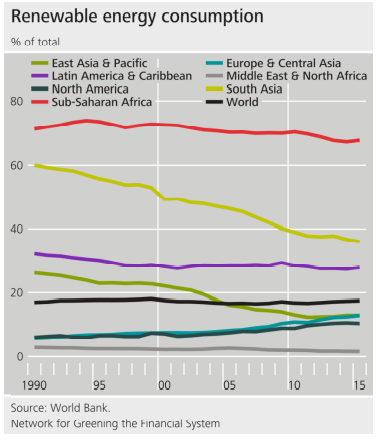
Link: World Development Indicators
Code: EG.FEC.RNEW.ZS
Countries: 217
Periods: 1990 – 2015 (annual)
Comments: None
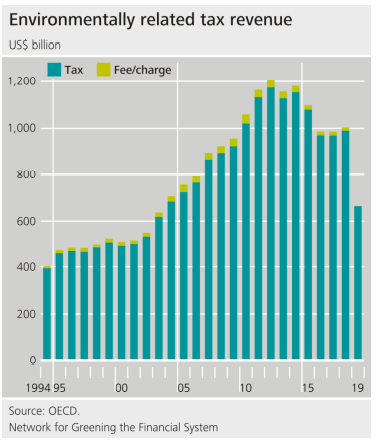
Link: Policy Instruments for the Environment
Code: (Taxes/Fees/Charges – Revenues generated)
Countries: 116
Periods: 1994 – 2020 (annual, microdata)
Comments: Chart as of March 2021 because of inconsistencies in exchange rates in the database in October 2022. Summary statistics available from the OECD data warehouse (code: ERTR)

Link: Fossil Fuel Subsidies
Code: (Values)
Countries: 42
Periods: 2010 – 2020 (annual)
Comments: Complementary data available from the OECD data warehouse (code: FFS_INDICATOR_DETAILED)
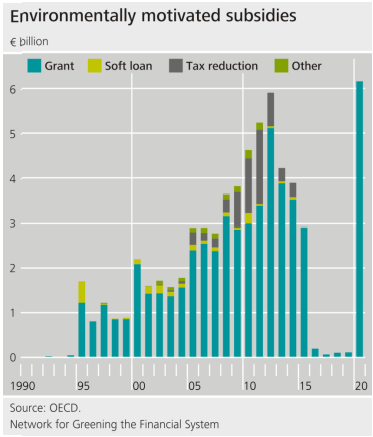
Link: Policy Instruments for the Environment
Code: (Environmental Subsidies – Annual cost)
Countries: 30
Periods: 1990 – 2020 (annual, microdata)
Comments: Database appears to be incomplete, particularly at the end (but also at the beginning).
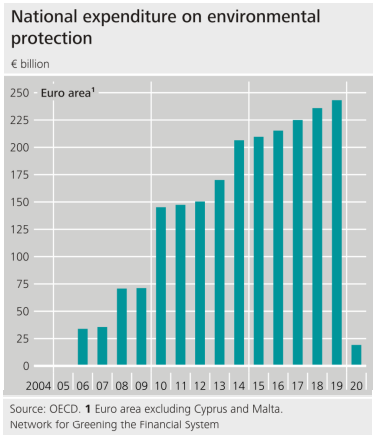
Link: Environmental Protection Expenditure Accounts
Code: EPEA
Countries: 27 (in national currency)
Periods: 2004 – 2020 (annual)
Comments: Database appears to be incomplete, except for the years 2014 to 2019.
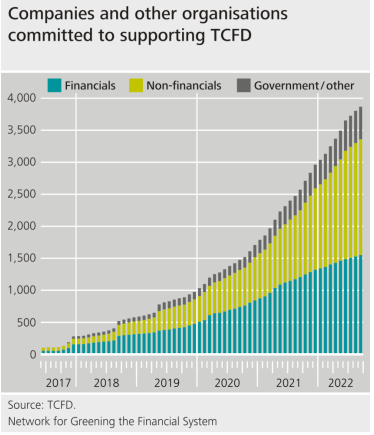
Link: TCFD supporters
Code: (Number of supporters)
Countries: 94
Periods: 2017 – 2022 (monthly, microdata)
Comments: None.
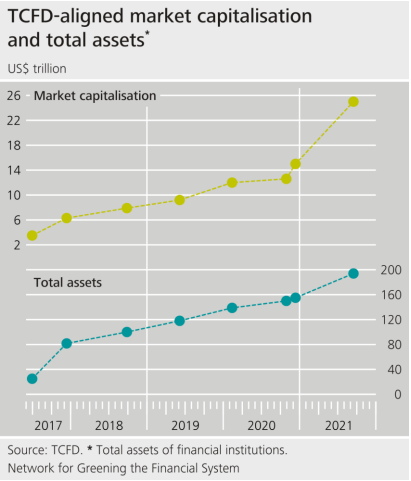
Link: Not applicable
Code: Not applicable
Countries: Not applicable
Periods: 2017 – 2021 (irregular)
Comments: Market capitalisation and total assets of financial institutions published irregularly in status reports and press releases.

Link: World Development Indicators
Code: NY.GDP.TOTL.RT.ZS
Countries: 217
Periods: 1970 – 2020 (annual)
Comments: Sum of oil rents, natural gas rents, coal rents (hard and soft), mineral rents, and forest rents
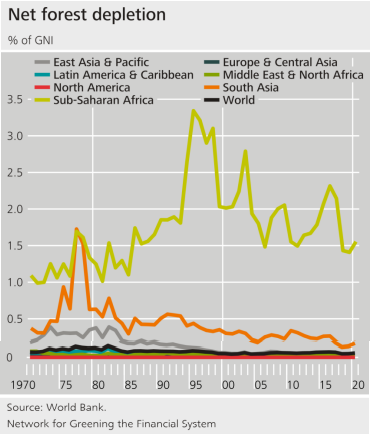
Link: World Development Indicators
Code: NY.ADJ.DFOR.GN.ZS
Countries: 217
Periods: 1970 – 2020 (annual)
Comments: Calculated as the product of unit resource rents and the excess of roundwood harvest over natural growth.
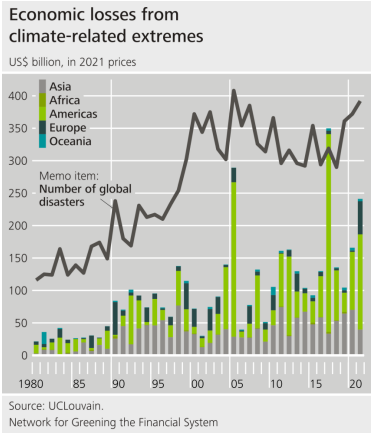
Link: EM-DAT database
Code: (Natural disasters: meteorological, hydrological, climatological)
Countries: 225
Periods: 1900 – 2021 (microdata)
Comments: Database appears to be incomplete, in particular regarding insured losses, and unbalanced in coverage.
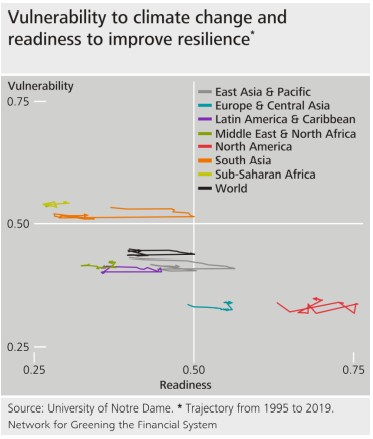
Link: ND-GAIN Country Index
Code: (Vulnerability, Readiness)
Countries: 192
Periods: 1995 – 2020 (annual)
Comments: Index is a composite indicator. World Bank regional averages weighted by population. Last update of the chart in July 2022.
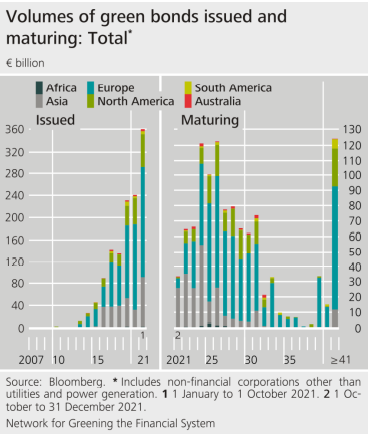
Link: Global market for sustainable finance
Code: Not applicable
Countries: 6 continents
Periods: 2007 – 2021 (annual)
Comments: Labelling not perfectly aligned with the Green Bond Principles. Microdata can be sourced against a paid subscription.
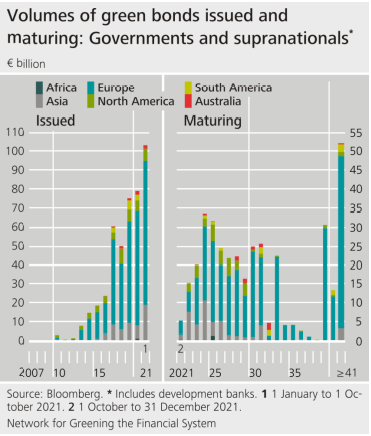
Link: Global market for sustainable finance
Code: Not applicable
Countries: 6 continents
Periods: 2007 – 2021 (annual)
Comments: Labelling not perfectly aligned with the Green Bond Principles. Microdata can be sourced against a paid subscription.
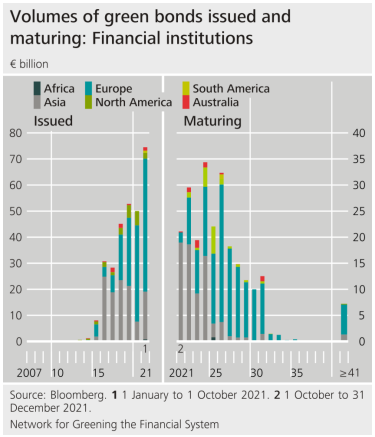
Link: Global market for sustainable finance
Code: Not applicable
Countries: 6 continents
Periods: 2007 – 2021 (annual)
Comments: Labelling not perfectly aligned with the Green Bond Principles. Microdata can be sourced against a paid subscription.

Link: Global market for sustainable finance
Code: Not applicable
Countries: 6 continents
Periods: 2007 – 2021 (annual)
Comments: Labelling not perfectly aligned with the Green Bond Principles. Microdata can be sourced against a paid subscription.
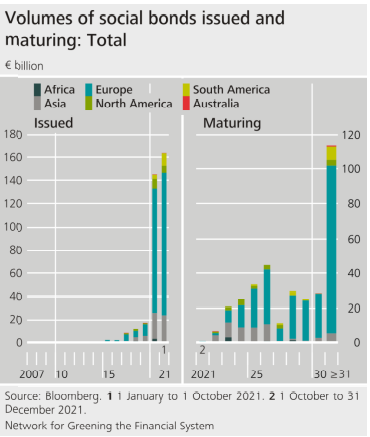
Link: Global market for sustainable finance
Code: Not applicable
Countries: 6 continents
Periods: 2007 – 2021 (annual)
Comments: Labelling not perfectly aligned with the Social Bond Principles. Microdata can be sourced against a paid subscription.
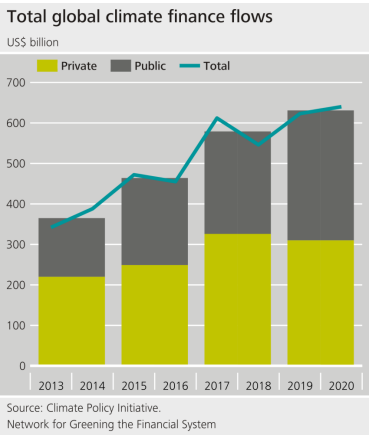
Link: Global Landscape of Climate Finance
Code: Not applicable
Countries: 10 regions
Periods: 2013 – 2020 (biennial/annual)
Comments: Selected further aggregates are available for actor breakdowns, uses, and instruments.

Link: PRI regulation database
Code: (Policy Status: Issued)
Countries: 84
Periods: 1930 – 2022 (microdata)
Comments: Data grouped by type of policy; who has issued it; who it is applicable to; and whether it is voluntary or mandatory.
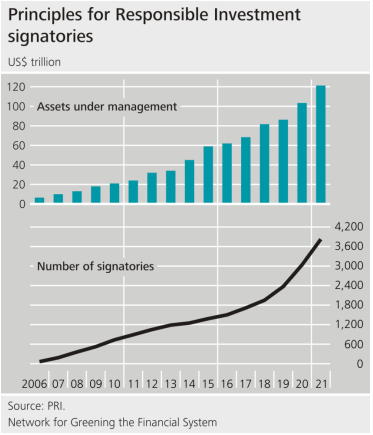
Link: About the PRI
Code: (Total)
Countries: 80
Periods: 2006 – 2021 (annual)
Comments: Daily microdata on PRI signatories available from the PRI signatory directory.

















































First, please LoginComment After ~